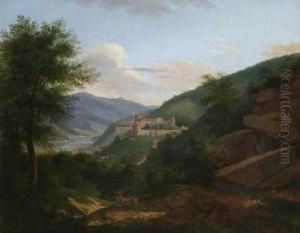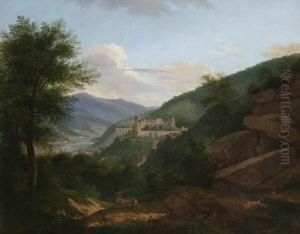Jakob Wilhelm Roux Paintings
Jakob Wilhelm Roux was a German painter, engraver, and lithographer born on April 18, 1803, in Heilbronn, Germany. He was one of the notable artists of his time, particularly recognized for his contributions to the genres of landscape and architectural painting. Roux's works are characterized by their meticulous detail and often feature romanticized depictions of nature and historical buildings.
Roux received his early education in art in Stuttgart, where he developed his foundational skills. He then furthered his studies by traveling to Paris, which at the time was a major center for the arts in Europe. In Paris, he was exposed to the works of eminent artists and the evolving styles of the early 19th century. This experience significantly influenced his artistic development and the crafting of his own style.
Returning to Germany, Roux became an active member of the art community. He produced a number of engravings and lithographs, a popular medium in the 19th century, which allowed for the reproduction of artworks and their distribution to a wider audience. Roux also taught art, passing on his techniques and knowledge to a new generation of artists. His works during this period often reflected a romantic idealization of the natural and built environment, resonating with the broader Romantic movement that sought to emphasize emotion and individualism.
Jakob Wilhelm Roux's contributions to German art were significant during his lifetime. Unfortunately, he did not enjoy a long career, as he died at a relatively young age on August 29, 1855, in Stuttgart. Despite his early death, his body of work has continued to be appreciated for its fine detail and craftsmanship. Roux's legacy lives on through his prints and paintings, which are held in various collections and continue to be studied for their historical value and artistic merit.

